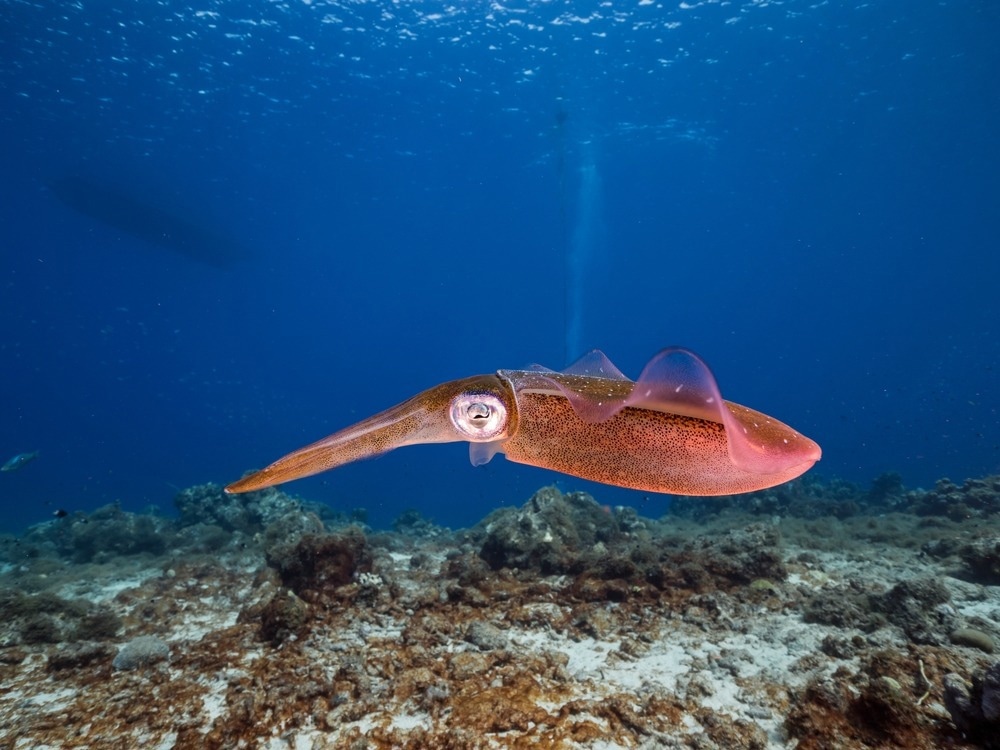Natural squid tissues and synthetic polymers were combined by scientists at Hokkaido University in Japan to create a robust hydrogel that closely resembles the special characteristics of biological tissues. There are numerous applications for hydrogels, which are polymer networks that contain a lot of water, including soft robotic parts, new sensor systems, and medical prosthetics.

Image Credit: NaturePicsFilms/Shutterstock.com
In the journal NPG Asia Materials, the Hokkaido team describes their contribution to this active field of study.
Researchers are attempting to replicate the distinctive properties that natural biological tissues possess that are crucial to their functions in hydrogels.
For instance, muscles have physical characteristics that vary in different directions and are constructed from a hierarchy of structures that work together, in addition to strength and flexibility. These characteristics, known as hierarchical anisotropy, are also present in bones and blood vessels.
Most synthetic hydrogels have uniform properties in all directions and are structurally weak, in contrast to the natural tissues that researchers are attempting to mimic.
By combining the properties of tissues derived from squid with synthetic polymers, we have demonstrated a hybrid strategy that serves as a general method for preparing hydrogels with useful hierarchical anisotropy and also toughness.
Tasuku Nakajima, Polymer Scientist, Hokkaido University
The primary outer layer of a squid, the frozen mantle, is the first step in the manufacturing process. The mantle of a live squid expands to take in water before tightly contracting to eject water outward as a jet.
The anisotropic muscles found in the connective tissue of squids give them this ability. To create their bio-mimicking gel, the researchers took advantage of the molecular configurations in this natural system.
Thin slices of defrosted squid tissue combined with polyacrylamide polymer molecules underwent chemical and thermal treatment to develop the cross-linked hybrid hydrogel. It has a double-network structure, where the synthetic polymer network is enmeshed and connected within the more organic muscle fiber network derived from the squid mantle.
The DN gel we synthesized is much stronger and more elastic than the natural squid mantle. The unique composite structure also makes the material impressively resistant to fracture, four times tougher than the original material.
Jian Ping Gong, Professor, Hokkaido University
The current proof-of-concept work must only be the beginning of the exploration of numerous other hybrid hydrogels that might take advantage of the special qualities of other natural systems.
Jellyfish are an obvious choice for further investigation into hybrid double-network options since they have already been used as a source of material for more straightforward single-network hydrogels.
Gong added, “Possible applications include load-bearing artificial fibrous tissues, such as artificial ligaments and tendons, for medical use.”
The team will continue to explore the gels’ biocompatibility and look into ways to create a variety of gels that are appropriate for various applications.
The Japan Society for the Promotion of Science (JSPS) KAKENHI (17H06144, 22H04968) provided funding for this study.
Role of muscle fibers in the squid-synthetic polymer double-network gel
When a notch is cut into the squid-synthetic double-network gel and it is gradually stretched, the break does not cut straight across the composite because the muscle fibers suppress the crack spread. Video Credit: Shou Ohmura, et al. NPG Asia Materials. January 20, 2023.
Journal Reference:
Ohmura, S., et al. (2023) Squid/synthetic polymer double-network gel: elaborated anisotropy and outstanding fracture toughness characteristics. NPG Asia Materials. doi:10.1038/s41427-022-00454-9.